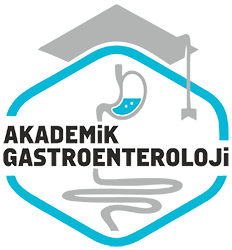Aralik 2007
Superior mezenterik arter sendromunda cerrahi yaklasim: Dört olgu sunumu
Surgical management of superior mesenteric artery syndrome: Report of four cases
- Ana Sayfa
- Sayılar
- Aralik 2007
- Superior mezenterik arter sendromunda cerrahi yaklasim: Dört olgu sunumu...
Atatürk Üniversitesi Tip Fakültesi , Genel Cerrahi Anabilim Dali2, Erzurum
Özet
Giriş ve Amaç: Duodenumun 2. veya 3. kisminin süperior mezenterik arter basisi nedeniyle kronik Aralıkli, ya da akut total ya da parsiyel obstrüksiyonu sonucu olarak ortaya çikan iyi tanımlanmis bir klinik tablo olmasina ragmEn sık karsilasilmayan bir durumdur. Bu arteriomezenterik kompresyonun tedavisinde medikal ve cerrahi tedavi modaliteleri yer almaktadır. Biz bu Çalışmamızda süperior mezenterik arter sendromlu Hastaların cerrahi tedavi yaklasimlarini ve sonuçlarımizi değerlendirmeyi amaçladık. Gereç ve Yöntem: Ocak 2000 ve Ocak 2006 yıllari arasında klinigimizde süperior mezenterik arter tanıli hastalar retrospektif olarak tarandi. Bulgular: Süperior mezenterik arter sendromlu dört hastanın tümünde karın ağrısı, bulanti, yemeklerden sonra kusma, kilo kaybı şikayetleri mevcuttu. tanıda özefagus pasaj grafisi, endoskopi, bilgisayarli tomografi kullani ldi. Tüm hastalar cerrahi tedavi öncesi medikal tedavi almisti. Cerrahi tedavi olarak 3 hastaya duodenojejunostomi ve bir hastaya gastroenterostomi uygulandi. Postoperatif dönemde sorun gözlenmeyen hastalar ortalama postoperatif 6. gün taburcu edildi. Tartisma: Süperior mezenterik arter sendromu olgularinda esas problem aortomezenterik çikis açisindaki daralma olmasi nedeniyle tek basi- na konservatif tedavi genellikle yetersiz kalmaktadır. tanı koyabilme bu tür hastalarda önemlidir ve karın ağrısı olgularinda mutlaka düsünülmelidir. Bu olgularda duodenojejunostomi yüksek basari oranina sahip cerrahi tedavi seklini olusturmaktadır.
Abstract
Background and Aims: Superior mesenteric artery syndrome is an uncommon but well-recognized clinical entity characterized by compression of the third, or transverse, portion of the duodenum against the aorta by the superior mesenteric artery, resulting in chronic, intermittent, or acute complete or partial duodenal obstruction. The treatment of this arteriomesenteric compression includes conservative measures and surgical intervention. The purpose of the present study was to evaluate our surgical management and outcomes of the patients with superior mesenteric artery syndrome. Materials and Methods: Between January 2000 and January 2006, the patients with superior mesenteric artery syndrome were retrospectively analyzed from the case records. Results: All four patients had a history of chronic abdominal pain, nausea, postprandial discomfort, vomiting, and weight loss. Diagnostic methods included barium esophagogastroduodenography, upper gastrointestinal endoscopy, and computed tomography. Medical management was administrated in all cases before surgery. Of those, three underwent duodenojejunostomy and one underwent gastroenterostomy. Postoperative period was uneventful and mean day of hospital discharge was postoperative day 6. Conclusions: Because the main problem is the narrowing of the aortomesenteric angle in patients with superior mesenteric artery syndrome, conservative initial treatment usually results in surgical intervention. Diagnosis of the pathology is the first step of the treatment, and superior mesenteric artery syndrome should be considered in the differential diagnosis in patients with chronic upper abdominal pain. Duodenojejunostomy is the most frequently used procedure with a high success rate.



